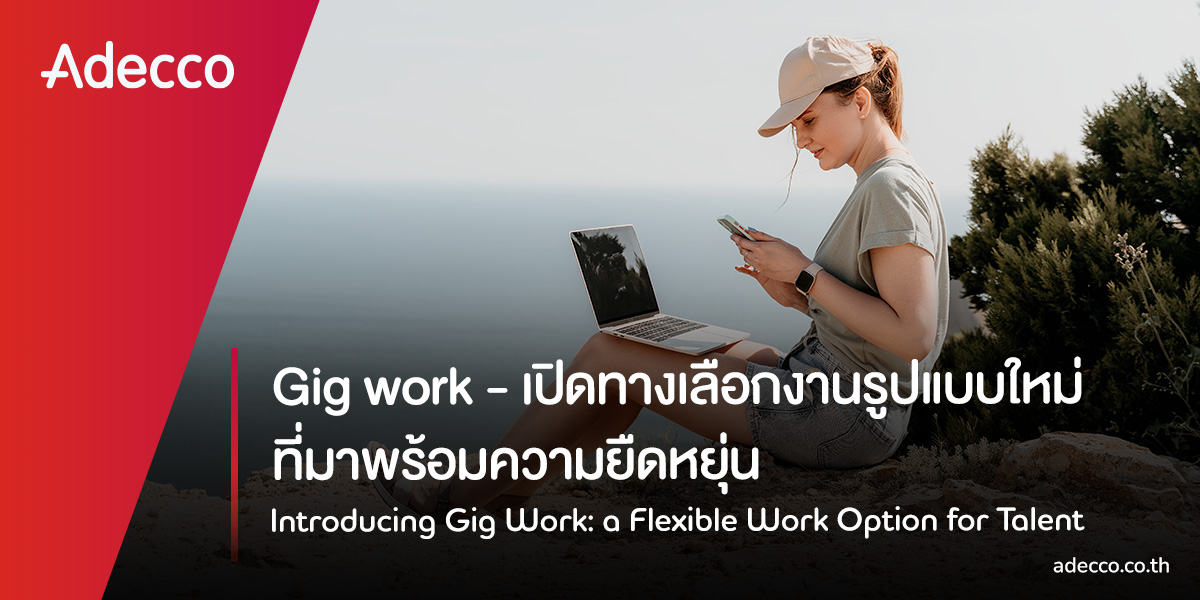With all the changes going on in the job market, from the arrival of Artificial Intelligence to DE&I becoming one of the biggest recruitment factors, it can be quite a challenge to keep track of how these new trends affect the hiring landscape and coming up with new approaches towards attracting and retaining today’s talent.
To help organizations firmly push off toward 2025, The Adecco Group has done research on what workers are looking for and how they are adapting to the new trends. Explore how the current trends are shaping today’s recruitment sector, how you can draw top talent your way, and how to keep them in your organization in the long run.
How the New Trends Affect Today’s Workers
- Fears from uncertainty & job security: According to our latest report, over 40% of workers are concerned about their long-term job security. While 48% of employees revealed that economic uncertainty is influencing their working life
- Grasping the new reality of working with AI: The arrival of AI makes 23% of workers feel like their skills are less relevant. The situation got even worse for some workers, as 21% of them say that AI forced them to consider changing careers, while 13% of workers lost their jobs because of AI.
- Adapting to sudden change takes a toll on mental health: At the center of a fast-paced and ever-changing work environment, 40% of workers around the globe have felt burnt out in the past 12 months due to taking on too much of a workload.
- Workers desire to be upskilled: Amidst the skills shortage issue, 76% of employees revealed that companies should train existing workers to take on different roles before considering hiring external candidates.
To learn more about how Artificial Intelligence is reshaping the job landscape and changing workers’ expectations, check out our latest report; ‘Working through change: adapting to an AI-driven world of work.’
5 Employee Retention Strategies You Should Apply
1. Embracing AI & Making Sure Your Workers Are Ready
While AI causes negative effects on certain workers in some sectors, it also comes with a positive side as well. 71% of workers are willing to adapt to this changing environment, while 51% of them recognize that AI skills broaden their job opportunities.
As a leader, it goes without saying that you must provide your workers with an opportunity to hone their AI-related skills. It’s a good idea to come up with AI frameworks. Expose your workers to AI and provide them with a training program to prepare them for the future of work. Your investment will surely pay off. Evidently, over 79% of employees who completed AI training courses are applying what they’ve learned to their work, ensuring the quality and efficiency of your production.
2. Upskill Your Workforce
Skill shortage has been an issue for a while, and upskilling can potentially be the solution. However, while workers out there want internal mobility, not enough companies are giving it to them or see the value in moving these workers up. According to our survey, over 65% of business leaders agree that skills shortages are having an impact on their companies, but only half of them implemented strategies to push internal mobility.
So, offer your workers a chance to grow and shine. Invest in an upskilling initiative. Discuss with each employee and design a training program tailored for them. This is how you retain talent and competitive advantage. Based on our report, 67% of employees who regularly take part in training provided by their employers intend to stay with their current companies for the next 12 months.
3. Offer Flexible Work Arrangements
The flexible work model made a stamp on the world of work, and it’s here to stay. According to a study, the number of employers requiring in-office or on-site work has gone down by 4% since the first quarter of 2024. Yes, it means the remote and hybrid work model is making its way back. [1]
It’s been proven that workers can manage to get the job done in the comfort of wherever they are. Cutting the frustrating commute time allows them to be more productive and opens a window for them to manage their own time.
To cater to the needs of today’s workers and to make sure that you retain top talent in your organization in the long run, offer your workers a flexible work arrangement. Either hybrid or fully remote, it will help boost employees’ job satisfaction while allowing them to balance their professional and personal lives more effectively.
4. Reiterate Diversity, Equity, and Inclusion
DEI isn’t just a buzzword; it is an important aspect that makes a company a desirable workplace. It’s no surprise that 81% of workers will leave their companies if their employers show no sign of commitment to DEI. 54% of them will even accept a lower pay cut for a company that offers a strong DEI environment. [2]
Companies out there are also no longer aiming to just reach the diversity quotas; they are working hard on creating an inclusive environment that celebrates differences, from gender, and ethnicity, to age and abilities.
If you haven’t or don’t have a strong DEI initiative, you should focus more on creating an inclusive workplace that embraces everyone with arms open. It’s a good idea to orchestrate blind interviews to eliminate biases against candidates’ ethnicity, gender, or physical condition. Also, it’s nice to build a DEI foundation among your workforce by implementing anti-discrimination policies and providing diversity training to make sure all voices matter.
5. Don’t’ Forget About Employee Well-Being
Now, we can’t talk about a safe and inclusive environment without mentioning the health of employees. Over 54% of workers in the UK revealed that a high workload caused them stress which contributed to burnout? [3] Consequently, burnt-out workers have been 68% less productive than their healthy colleagues in the past year. This is undoubtedly a serious issue that requires employers’ attention.
You can start by investing in an employee well-being program. Make sure there’s help whenever your employees need it, physically and mentally. Keep in mind that these things matter and will contribute to employees’ satisfaction, making talent stay with you longer.
Conclusion
Employee retention is more than just coming up with a strategy and laying it on your framework. It’s about paying attention to your employees, listening to their voices, knowing what they need, and supporting them. These five approaches that we’ve walked through are the answers to employees’ current needs, based on our research. Applying these strategies can help make sure that your organization will boldly head toward 2025 with a stronger workforce.
Ref:
[1] Forbes
[2] LinkedIn
[3] Harkn



